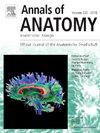B-learning in human anatomy: Comparative analysis of academic achievement between face-to-face and e-learning modalities
IF 2
3区 医学
Q2 ANATOMY & MORPHOLOGY
引用次数: 0
Abstract
Introduction
In recent years, modern technologies have become established in most educational fields. Thus, e-learning tends to be an integral part of the learner-centered learning process, with the teacher acting as a facilitator. However, the methodologies used to study the impact of e-learning have been varied and imprecise, making comparison and meta-analysis difficult. This study attempts to overcome these obstacles with a large and homogeneous sample to compare (1) the academic outcomes obtained with face-to-face and e-learning in a blended module of human anatomy and (2) the response attempts (response index) of each student in answering questions specific to each learning modality.
Material and methods
The results of the multiple-choice exams under study were collected. All students (n=1160) were from four consecutive academic years following the same teaching program with a b-learning method: 13 topics were presented face to face by the same lecturers, and six via e-learning with the same online resources. Two variables were compared: (1) the academic grade, based on the score for correct answers and the penalty for incorrect ones, and (2) the response index, based on the number of correct and incorrect answers.
Results
(1) 73.45 % of the examinees passed the test. In the sample as a whole, results were better in face-to-face than in e-learning. In the quartiles ordered by overall academic performance, this superiority was limited to the top half of the higher-performing students. In contrast, lower-scoring students performed better in e-learning. However, these differences were modest (≤ 0.54 points). (2) In proportion, the questions on topics learned face-to-face were the most frequently answered. A strong correlation was observed between the variables in the whole sample and the students with the highest academic scores (first quartile) on the global exam and the questions on topics learned in each modality. In the remaining quartiles, the correlation was also strong in the e-learning content.
Conclusions
(1) Both modalities included in b-learning are academically effective. (2) Proportionally, students take more risks when answering content questions learned in face-to-face classes, and there is a strong correlation between response attempts and academic grades, especially, on the brightest exams and e-learning content.
B-learning in human anatomy:面授和电子学习模式的学业成绩比较分析。
引言近年来,现代技术已在大多数教育领域得到应用。因此,电子学习往往成为以学习者为中心的学习过程中不可或缺的一部分,而教师则扮演着促进者的角色。然而,用于研究电子学习影响的方法多种多样,而且不精确,因此很难进行比较和元分析。本研究试图克服这些障碍,采用大量同质样本,比较(1)在人体解剖学混合模块中通过面授和电子学习获得的学术成果,以及(2)每个学生在回答每种学习方式的特定问题时的反应尝试(反应指数):收集所研究的选择题考试成绩。所有学生(n=1160)均来自连续四个学年的同一教学计划,并采用 b-learning 方法:13个题目由相同的讲师面授,6个题目通过相同的在线资源进行在线学习。比较了两个变量:(1) 基于正确答案得分和错误答案惩罚的学业成绩;(2) 基于正确和错误答案数量的反应指数。在整个样本中,面授学习的成绩好于网络学习。在按总学业成绩排序的四分位数中,这种优势仅限于成绩较好学生的前半部分。相比之下,分数较低的学生在网络学习中的表现更好。不过,这些差异不大(≤ 0.54 分)。(2) 在比例上,面对面学习的题目是最常回答的。在整个样本中观察到的变量,以及在全球考试中学习成绩最高(第一四分位数)的学生与每种模式下所学题目之间存在很强的相关性。在其余四分位数中,电子学习内容的相关性也很强。结论:(1) b-learning 中的两种模式在学术上都很有效。(2) 从比例上看,学生在回答面授课程所学内容的问题时会冒更大的风险,而且回答尝试次数与学习成绩之间有很强的相关性,尤其是在最亮眼的考试和电子学习内容上。
本文章由计算机程序翻译,如有差异,请以英文原文为准。
求助全文
约1分钟内获得全文
求助全文
来源期刊

Annals of Anatomy-Anatomischer Anzeiger
医学-解剖学与形态学
CiteScore
4.40
自引率
22.70%
发文量
137
审稿时长
33 days
期刊介绍:
Annals of Anatomy publish peer reviewed original articles as well as brief review articles. The journal is open to original papers covering a link between anatomy and areas such as
•molecular biology,
•cell biology
•reproductive biology
•immunobiology
•developmental biology, neurobiology
•embryology as well as
•neuroanatomy
•neuroimmunology
•clinical anatomy
•comparative anatomy
•modern imaging techniques
•evolution, and especially also
•aging
 求助内容:
求助内容: 应助结果提醒方式:
应助结果提醒方式:


